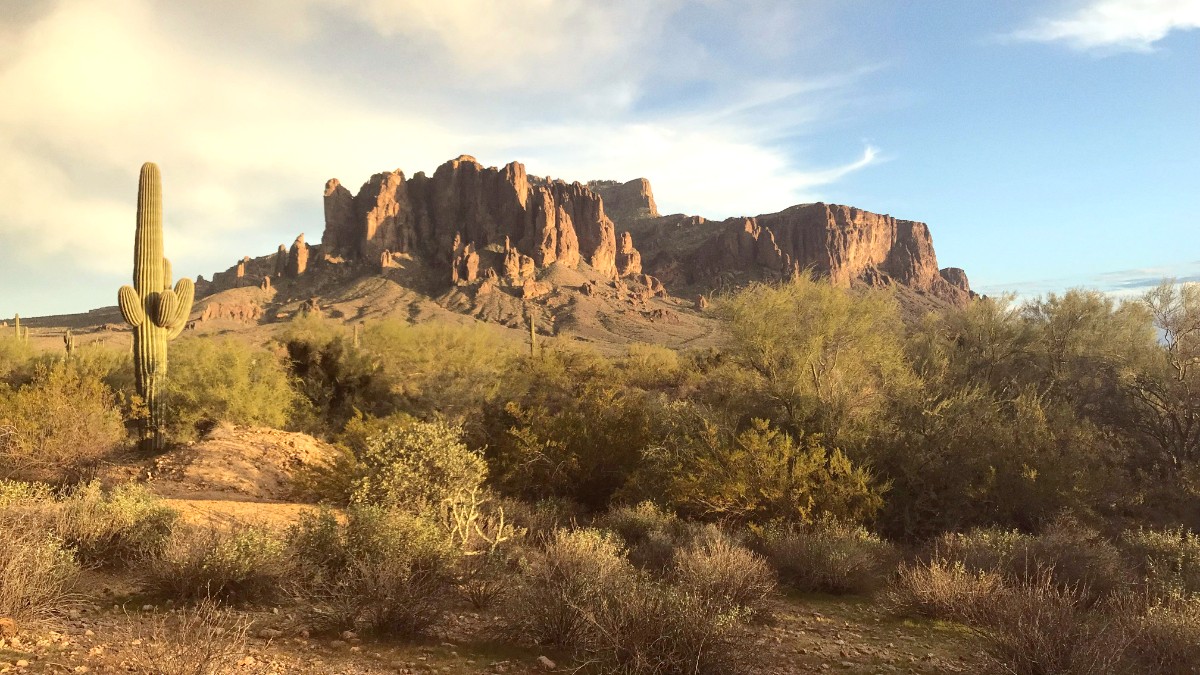
Arizona, USA
Winter (November - March): This period presents the most pleasant weather. Daytime temperatures typically range from 65-75°F (18-24°C). Nights grow cool, falling to 40-50°F (4-10°C). Humidity stays low. Precipitation is minimal, mostly light rain showers. This season has utility for outdoor activities due to comfortable conditions. Clear, sunny skies are a consistent feature.
Summer (June - September): This period brings extreme heat. Daytime temperatures often exceed 100°F (38°C), frequently reaching 105-115°F (41-46°C) in July and August. Nighttime temperatures offer minimal relief, often staying above 80°F (27°C). Humidity expands significantly during the monsoon season, making the heat feel more intense.
Phoenix's tourist seasons directly relate to its climate. Each season presents distinct advantages and considerations for your visit.
High Season (Nov-Apr): Ideal weather, but higher prices and larger crowds. All attractions and resorts operate fully. Many festivals and events occur.
Shoulder Season (May & Oct): Transitioning temperatures. Often pleasant, especially mornings and evenings. Lower prices than high season, fewer crowds.
Low Season (Jun-Sep): Significant savings on accommodations and flights. Fewer tourists. Excellent for indoor activities. Extreme heat.
June - September
Significant price reductions for flights and lodging.
Daytime outdoor activity is difficult and potentially unsafe.
May & October
Agreeable weather and value for money often coexist.
Late May temperatures increase significantly.
November - April
Perfect for outdoor pursuits and many events.
Higher costs and increased crowds are common.
Mid-June to mid-September. This period displays increased humidity and sudden, intense thunderstorms. Heavy rain creates flash flooding risk in washes and low-lying areas. Dust storms, known as "haboobs," are common, severely reducing visibility and air quality. Monsoons usually occur in late afternoon or evening.
Summer temperatures consistently exceed 100°F (38°C). The National Weather Service issues heat advisories and warnings regularly. Risks of heatstroke, heat exhaustion, and dehydration are very high. Avoid strenuous outdoor activity during peak heat hours (10 AM - 4 PM). Stay hydrated by drinking water frequently. Wear lightweight, light-colored clothing. Use sunscreen and a wide-brimmed hat. Seek air-conditioned spaces often.
Heavy rain leading to flash floods.
Haboobs can suddenly reduce visibility.
Typical in late afternoon or evening.
Never drive through flooded roads (Turn Around Don't Drown).
Remnants can bring humidity and rain, no direct impact.
Navigating entry requirements for the United States is a process international travelers address before their journey.
Entry requirements vary significantly by nationality.
Gather all necessary documents before your journey. Careful preparation helps avoid delays.
Making physical and digital copies of your passport, visa/ESTA, and important travel documents has utility. Keeping them separate from originals makes for simpler resolution if loss or theft occurs.
Visit costs vary significantly based on your travel style. This section details common expenditures.
The official currency of the United States is the United States Dollar (USD, represented by the $ symbol).
ATMs are available throughout Phoenix. Access them at banks, supermarkets, convenience stores, and the airport. Using ATMs generally presents the most favorable exchange rates for cash withdrawals. Major credit cards (Visa, Mastercard, American Express, Discover) are accepted across Phoenix, a preferred payment method for most transactions.
Daily Costs: $70 - $150 USD per person. A bed in a hostel or budget motel, fast-casual meals, public transit, and free/low-cost activities.
Accommodation: $40-$80
Activities: $5-$15 (focus on free options)
Daily Costs: $150 - $350 USD per person. A 3-star hotel or comfortable private rental, casual to nicer dining, partial rental car use, paid attractions.
Meals: $40-$80
Transportation: $20-$50 (rental car/ride-sharing)
Daily Costs: $350+ USD per person. 4-5 star resorts, fine dining, premium transport, spa treatments, private tours, golf.
Activities: $60+ (spa/private tours)
Accommodations: $200+ (top-tier properties)
| Category | Approximate Price Range (USD) | Notes |
|---|---|---|
| Accommodation (per night) | $30 - $800+ | Hostel beds to luxury resorts (significant seasonal variation). |
| Meals (per person) | $8 - $70+ | Breakfast to fine dining (excluding drinks/tip). |
| Transportation | $2 - $80+ | Light rail single ride to economy rental car per day (excluding gas/insurance). |
The desert environment presents unique considerations for visitor health and safety.
No specific vaccinations are required for entry to Phoenix or the U.S. For general travel.
CDC suggests routine vaccinations (MMR, DTaP, Varicella, Polio, Annual Flu Shot, Hepatitis A/B). Consult a healthcare provider 4-6 weeks before your trip.
Heat-related illnesses (heatstroke, exhaustion, dehydration) are serious risks. Sunburn is also a year-round risk. Desert wildlife encounters are possible.
Prevention is a core consideration for a safe visit.
For heat: Maintain hydration, avoid strenuous outdoor activity during peak heat hours (10 AM - 4 PM). Wear lightweight, light-colored, loose-fitting clothing. Use High SPF sunscreen (30+), a wide-brimmed hat, and seek shade/air-conditioned spaces.
For sun: Consistent sunscreen use, protective clothing, UV protection sunglasses. For wildlife: Stay on marked trails, do not approach, seek medical aid for bites/stings.
Tap water is safe. Food hygiene standards are high.
Dial 911 for police, fire, or medical emergencies. Clear and concise information for dispatchers is helpful.
Numerous well-equipped hospitals: Banner University Medical Center Phoenix, HonorHealth John C. Lincoln Medical Center, Mayo Clinic Hospital.
For non-life-threatening issues (minor injuries, colds), NextCare Urgent Care and FastMed Urgent Care are less expensive and faster.
Phoenix, a large city, has varying crime rates. Overall safety exists for tourists in major areas. Natural disaster risks are mainly weather-related.
Travel insurance is recommended for all visitors. A comprehensive policy can mitigate financial consequences from unforeseen events.
Medical emergencies, trip cancellation/interruption, lost/delayed luggage, other unforeseen travel issues. Compare policies from World Nomads, SafetyWing, and Insubuy. AirHelp Compensates for delayed flights.
911 (Police, Fire, Medical - U.S. National emergency number). Non-Emergency Police (Phoenix): (602) 262-6151. Poison Control: 1-800-222-1222.
Banner University Medical Center Phoenix: (602) 839-2000. Mayo Clinic Hospital: (480) 342-2000. HonorHealth John C. Lincoln Medical Center: (602) 943-2381.